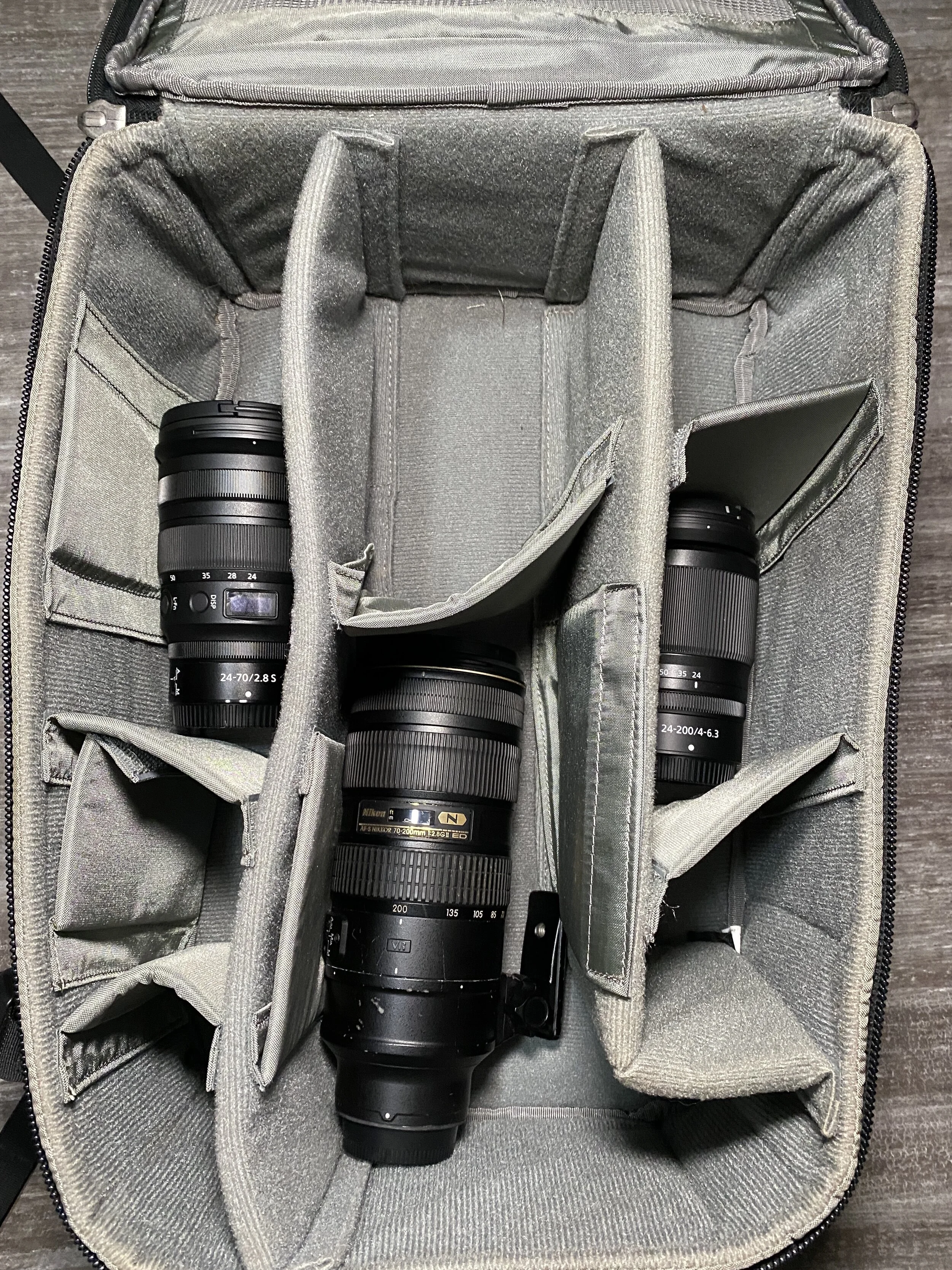Best Lens for Landscape, Cityscape and Travel Photography?
Hei guys! I’m back with another video. Today I’m gonna be talking about what I think could be the best Nikon Z lens for landscape and travel photography ever!
So I picked up this lens from the Nikon office last week. This is the Nikkor 24-200mm F4-6.3 Z mount lens.
And to be totally honest with you guys, I’m really really excited about this new lens. You might be thinking, this is just an all-purpose zoom lens, it doesn’t have a fast aperture, it’s not F2.8, it’s probably inferior in sharpness and quality. Why am I so excited about this?
Reason 1: Focal Range
Well first of all, the 24-200 range is an excellent focal range for landscape, cityscape and travel photography. Although most of landscape photography is going to be taken from the wide end at 24mm, there are some very useful applications of shooting at the telephoto end.
Aspen tree, easily identifiable by its white bark, isolated using a 200mm lens.
Shooting a telephoto has a very different effect from shooting a wide angle. You get that telephoto compression, which really presses the space in between the subject and the background. I’m looking forward to be shooting a lot of architectural detail at the 200mm end of this lens.
Play with architectural patterns with the telephoto compression in effect.
It’s also a very good tool for isolating a subject from a messy background, and check out how I focused attention on these maple leaves from its surroundings by throwing the rest of the scene out of focus. This effect can’t be achieved with a wide angle lens.
Autumn in Hokkaido. Shot at 200mm.
Reason 2: Weight
When I travel, if I want to carry this focal range of 24-200 with me, I’ll have to bring along my 24-70 F2.8 (805g) & 70-200 F2.8 VR2 (1,530g), that’s a combined weight of 2.3 kilos. This 24-200 only weights 570g. That’s approximately 4 times lighter!
That little lens on the right replaces the two lenses on the left for my landscape needs.
Look at at size difference as well! With it’s 67mm filter thread diameter, it can easily fit into any camera bag. If I’m going hiking up the Canadian rockies or going through the desert in Utah, I’ll take this smaller lens over having to carry 2 huge other lenses.
Left: 24-70 F2.8Z, Middle: 70-200 VRII (F Mount), Right: 24-200 F4-6.3Z
Let’s also be honest here. How many times have you left a heavy lens at home or in the car because you’re too lazy to carry it out? With this, I have that entire focal range in my hand. The telephoto option is always going to be there when I want it.
This is outdated, but shows how much gear I used to travel with before the world of mirrorless cameras.
Reason 3: Quality/Sharpness
When I started photography, I wasn’t a huge fan of all-purposes lenses since my first kit lens which was the 18-105. I’ve never mentioned this on my YouTube channel but besides landscape and cityscape, I also ran a photography business where I shot over 140 events per year, as well as 20 plus wedding shoots. After factoring my landscape and pro bono shoots, this means I was shooting at least every other day.
The good old pre-COVID19 days of event photography. This doesn’t even include weddings, landscapes or pro bono shoots. I was shooting practically 3-4 times per week.
Because of this, I’ve always stuck with Nikon’s professional fast lenses, F2.8 or your F1.4/1.8 prime lenses. Using an all purpose zoom for those jobs simply wouldn’t cut it.
However, for landscape and cityscape photography, I don’t need fast lenses. I usually find myself shooting between F8 and F16. I’m almost never going to need a wide aperture for landscape photography.
Sharpness-wise, the days of poor performing all-purpose lenses are over. Based on most reviews I’ve seen, this lens is almost as sharp as the 24-70 F4.
Unedited SOOC raw (converted in Lightroom with no edits) Z24-200mm ISO 2000, f6.3, 1/500s at 200mm
Now you may argue that it’s still not going to be as sharp as the 24-70 F2.8, and you’re right in saying that. But how sharp do we need it to be?
Let’s be honest here. More than 95% of the images I take end up in social media and the rest are never even printed. That means the highest resolution you’re ever going to see those images, are at 2500px on my blog.
I’m not sure why I added this picture, it’s an image of my website on my website. So meta.
That’s it. 2500 pixels. And most of my viewers use a mobile device to view my images. The reality, whether I like it or not, is that a little less sharpness is not going to be seen.
In fact, the only way you’ll ever see any difference in sharpness, is if I shoot 2 sets of images using this and the 24-70, print and blow them up and at like 24 by 32 inches, and set them side by side for comparison. Even so, if I processed the images correctly, I believe you’ll be hard pressed to spot any difference.
The bottom line is that most people can’t tell any difference even if there’s a slight loss in sharpness. That’s how good this lens is.
Reason 4: Cost
Currently, you can buy this lens for about $1.4k SGD.
The Nikkor 24-70 F4 costs $1.5k SGD
The Nikkor 70-200 F4 costs $2.2k SGD
Total: $3.7k SGD
That’s $1.4k vs $3.7k. You decide.
Downsides
Are there any downsides to the Z24-200? Yes. Because Nikon made it so compact, it is a retractable lens. The front of the lens protrudes when you zoom out. That’s a problem because dust and dirt can accumulate on the lens, and when you retract it, dirt goes into the lens. Now Nikon says that it is dust and drip resistant, but I think that over time, some dust is gonna get in there. I’m just not a huge fan of retractable lens designs.
In conclusion, I’m really happy that Nikon produced this impressive lens at such a high quality and sharpness. The next time I travel, I’m so looking forward to ditching my heavy lenses and using this instead.
As usual guys thank you so much for reading. Leave any questions you have in comments down below, and I’ll see you again next time. Shalom and goodbye!










